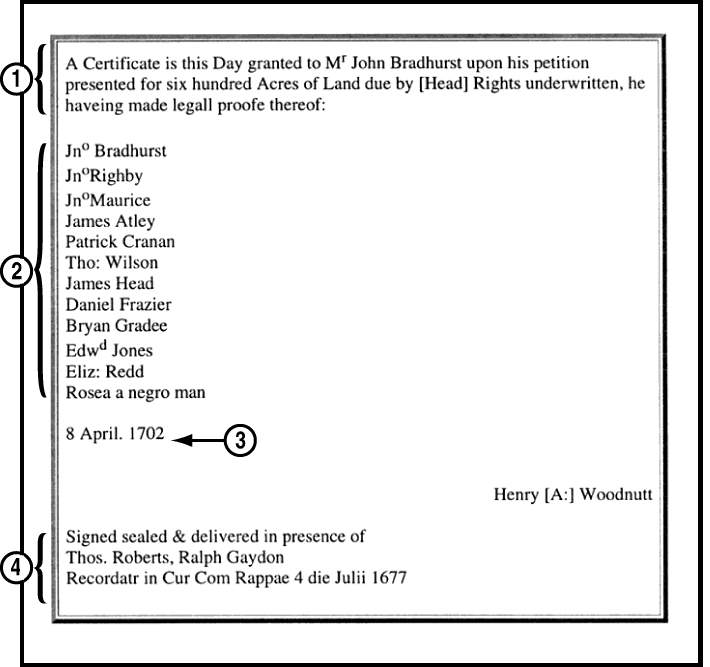
| 1. |
Name of person granted the certificate and
the quantity of land
|
| 2. |
Names of the people whose headrights
were claimed
|
| 3. |
Date the certificate was granted
|
| 4. |
Signature of issuer, witnesses,
date and place recorded
|

|
